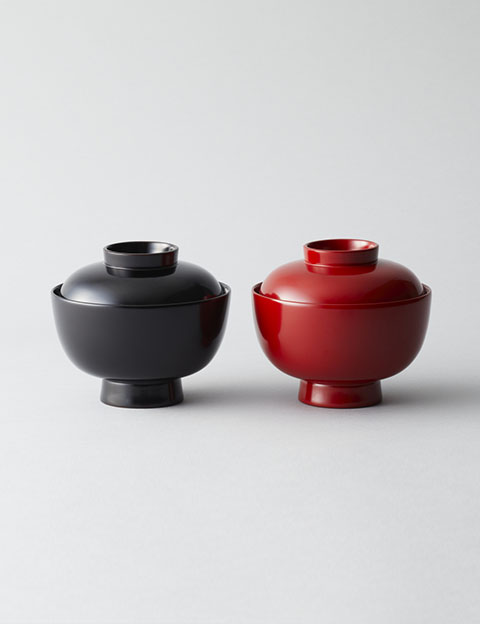KAWATSURA Shikki (Lacquerware)

The beginnings of Kawatsura lacquerware date back to the Kamakura era (1185-1333), when the younger brother of the lord who ruled this area ordered the retainers to begin lacquering pieces of armor and weaponry, using locally tapped lacquer and Japanese beech cut from nearby mountains. The production of bowls began in earnest in the middle of the Edo era (1600-1868). By the end of the Edo era, work was concentrated in what is now Inakawa-cho, Odate and Minashi, and production had expanded to include all manner of household items.
All Kawatsura lacquerware consists of wood and natural lacquer. And while no single feature is characteristic of the style, great emphasis is placed on the undercoating, which creates a hard finish that is extremely robust and also reasonably priced. The wide range of products include bowls, plates, trays and stacking boxes as well as furniture.
Feature
Wood serves as the base of all Kawatsura lacquerware products. And while there is no single feature that distinguishes Kawatsura lacquerware from similar products, great care is taken to produce an extremely durable base coating at a reasonable price. Kawatsura lacquerware comprises a rich assortment of products, ranging from small accessories to large pieces of furniture.
How to make
Round products, including bowls and pots, are made from the wood of horse chestnut and beech trees. Square products, including tiered lunch boxes, are made from the wood of Japanese magnolia trees and the like. The wooden base is hardened with repeated coatings of a mixture of persimmon tannin and raw lacquer and the advanced technique known as hana-nuri is used for the middle lacquer coat. After being allowed to dry, maki-e gold dust or gold leaf images are applied for decoration.

